Let me rephrase that sub-heading to:
How *I* write a comic.
I’m sure other cartoonists will have their own methods but whatever they are, they all involve brainstorming in some fashion. Few are the gags that are generated fully formed and ready to ink. Even when the writing is done, your drawing requires a critical eye to pull the whole thing together. The idea and the art inform each other in a comic. Notice I said the “idea” and not the words. That’s because a comic can have words or be wordless but it has to have an idea. It has to say something.
(Note: At the end of this post I’m going to leave you with a few simple tips that you can try to help you with your comic writing.)
I came across this brainstorming page in a box of my old comic files. It’s over thirty years old. I know this because there are landscaping sketch ideas in the book from my first house way before my kids were born.
So, let’s break down the steps I took to write one of the gag ideas from this page…
It’s obvious I had a general idea of where I was going with this gag because as shown, it’s at an editing stage rather than at a complete random thoughts stage. There’s an idea there…I’m just trying to flesh it out. The main gist is the two men are wondering what women talk about. (panel one) The second panel is trying to hash out the response to the question. Notice how I’m trying to make the response more succinct as I go along. Note: I do like the word “juicy”. Some words just have more oomph than others.
The third panel is re-emphasizing the men are trying to understand why women stop their conversation when men approach. (re-emphasizing because it’s part of the build up to the punchline) I’m trying out different comments…again, I’m trying to be succinct while still getting the point across that the WOMEN seem to be hiding something they don’t want men to hear. I gave up on the first line, “What can they POSSIBLY discuss that -” because it would require a whole lot of words to finish the thought. The second line works…but I’m wondering if I should keep his comments even shorter and try out, “WHY are they so secretive?” Short and sweet and leaves room for a Male #2 response. Some words are in CAPS which helps to push the point that the men really just can not fathom why women would try to hide a casual conversation. The final panel expresses the punchline with no words at all. The men have clammed up and stopped their conversation because a woman has approached and sat down beside them. (Note: these are very loose sketches…in a final rendering it would be obvious that the two men are in a movie theatre and eating popcorn. As I mentioned above, the art and the idea inform each other and also, you can have a drawing without words but the drawing has to communicate an idea.)
Okay, so after my first go-round, I am going to try again. I’m going to pick and choose from my initial brainstorming ideas and try to refine the gag.
I’ve tried cutting down the opening comment by leaving out the “when they’re alone” part. (as shown in the very first panel above) This leaves me a little extra room to include a response from the second Male. Notice I’ve flipped which Male begins the conversation. It doesn’t matter who starts the conversation in this particular comic because both men play a generic part. So who says what is strictly a layout issue. When you’re writing a comic with recurring characters, it absolutely WILL matter who says what because each of your characters will have their own distinct personalities. If your gags can be written and applied to any of your characters, you have a problem to address. You need to understand each of your characters as individuals with unique temperments and backgrounds and attitudes. But that’s going off on a bit of a tangent for another post.
In the second panel I’ve crossed out the response, “What’s the big secret?” and replaced with, “it’s so juvenile”. I’ve already made the point or at least alluded to the women being secretive so why repeat the thought again? That’s why I try out the juvenile comment. It’s an additional issue for the men. The women are being secretive AND the secrecy is juvenile. I’m still trying to hammer home the point how ridiculous the men think the women are being…still building up to the punchline.
More tries at the build-up to the punchline. I’m still trying out different comments to see what works…to see which grouping of words flow and make the point as clearly and succinctly as possible. I’ve tried a different response to Male #2 noticing a woman coming to sit by them. I like “you got me…oops…SSSH!” better than “Hey - Hey…Hey…SSSSH!” The hey, hey, hey bit takes too long. It needs to be more immediate. It should have the air of “YIKES” implied. The “you got me…oops…SSSH!” works better because it’s much quicker. But I would write this response without the ellipsis because the pause takes away from the “yikes” element. It should be: “You got me -oops, SSSH!”
I don’t have the finished comic from this brainstorming session and I’m not sure if I ever actually used it. But just for the exercise, this is how I would write it today if I were planning to publish it:
Two men are sitting in a movie theatre eating popcorn.
Male #1: I wonder what women talk about when they’re alone.
Male #2: I dunno.
Male #1: They ALWAYS clam up when a man’s in earshot. (flummoxed look)
Male #2: It’s so juvenile. (rolls eyes)
Male #1: Like, what’s so secretive about a casual conversation? (look of consternation)
Male #2: You got me- oops! SSSH! (eyes wide looking to right)
Final panel, woman sits beside them in movie theatre. Men sit in silence.
I don’t think this reads very funny but with the right art, I think it would bring a chuckle.
Here are a few comic-writing tips you might find helpful…
Read your comic aloud. It will sound different than it will in your head. You’ll hear how the words connect…if they are clear or jumbled. If your writing is balanced with an opening to a build-up to a punch, you will hear a certain rhythm. A single panel is a bit different as it has to have an immediate impact but you will still be able to hear whether or not your idea is being clearly communicated and if it punches.
Don’t follow the same rhythm format for every comic. Years ago, my editor and I were chatting and he pointed out that all my comics had the same pacing.
Beat -beat-longer set of beats-punchline.
I hadn’t noticed it but he was right. I always wrote in a 4 panel format and the pacing of the beats were always the same. It was very stagnating. I’ve made a conscious effort to watch for that and have used various rhythms ever since.
Use the appropriate vernacular. Your dialogue needs to fit the character AND the situation. Consider these words:
I dunno.
I don’t know.
I do not know.
There’s a big difference between a few kids talking vs. a casual conversation between some friends vs. a business exchange. Use words that sound real. You’re not writing a university essay.
Subscribe to read my comic strip, Between Friends daily for only $2.99/month! (That’s a dime-a-day!) We will send Between Friends to your inbox daily and you’ll have access to decades of archived strips PLUS you get an advance 7-day peek at upcoming comics. Sign up at Comics Kingdom.
SIGN UP FOR A 30-DAY FREE TRIAL!

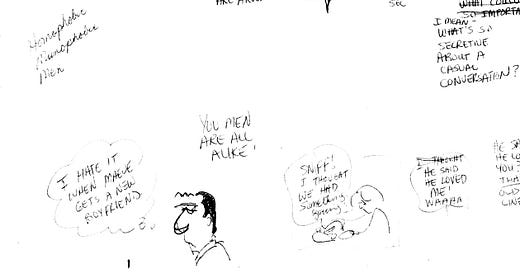



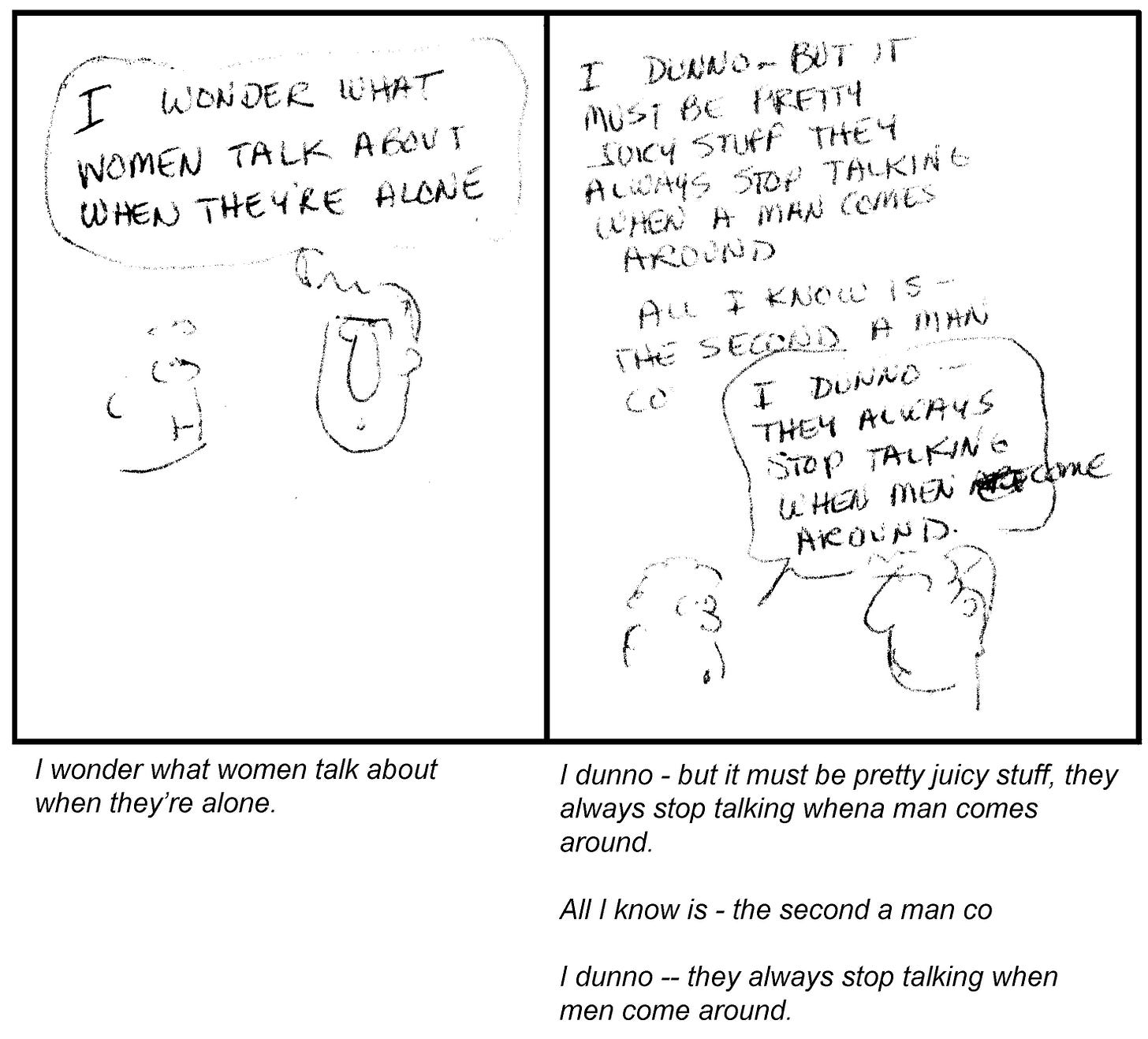
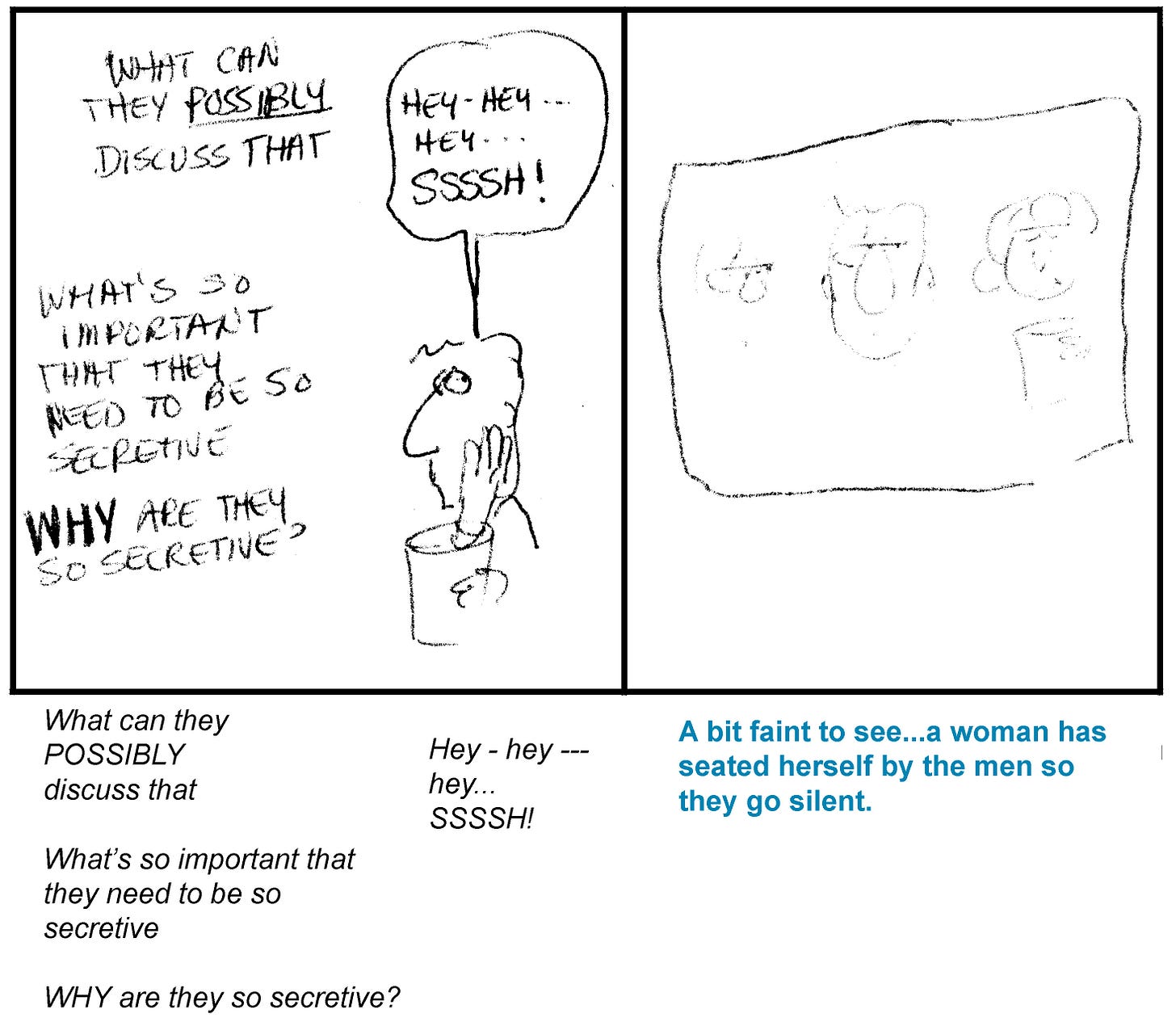
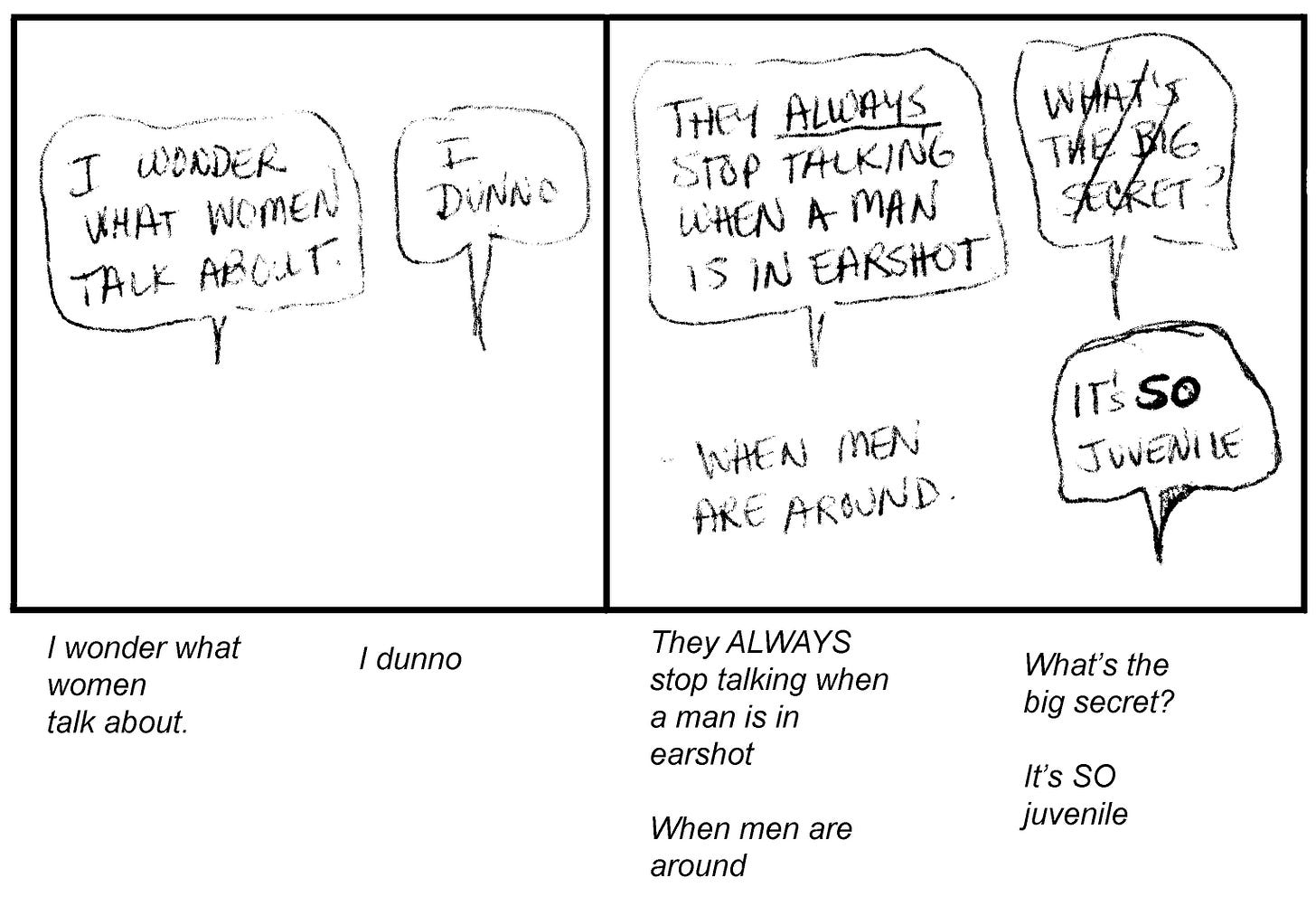
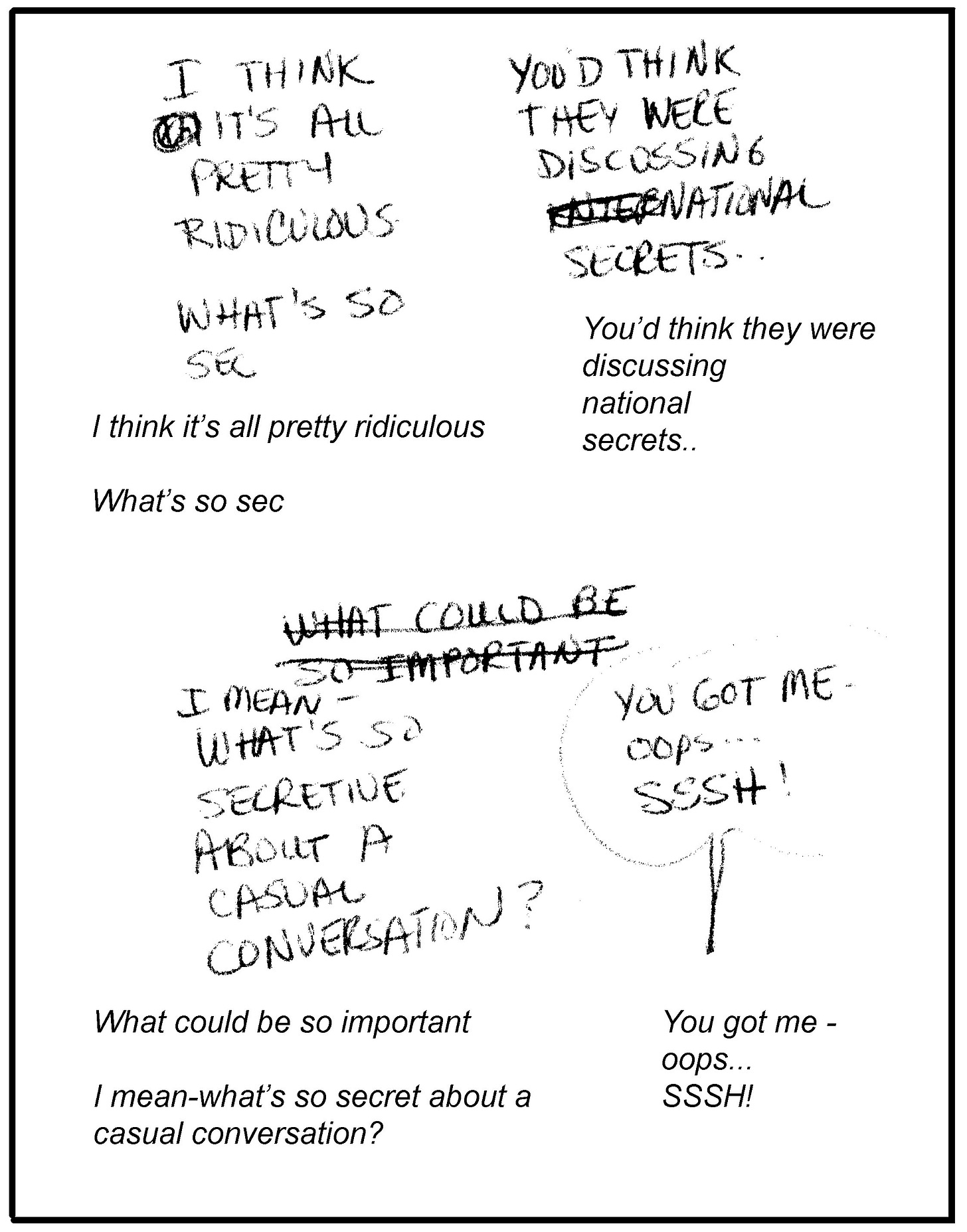
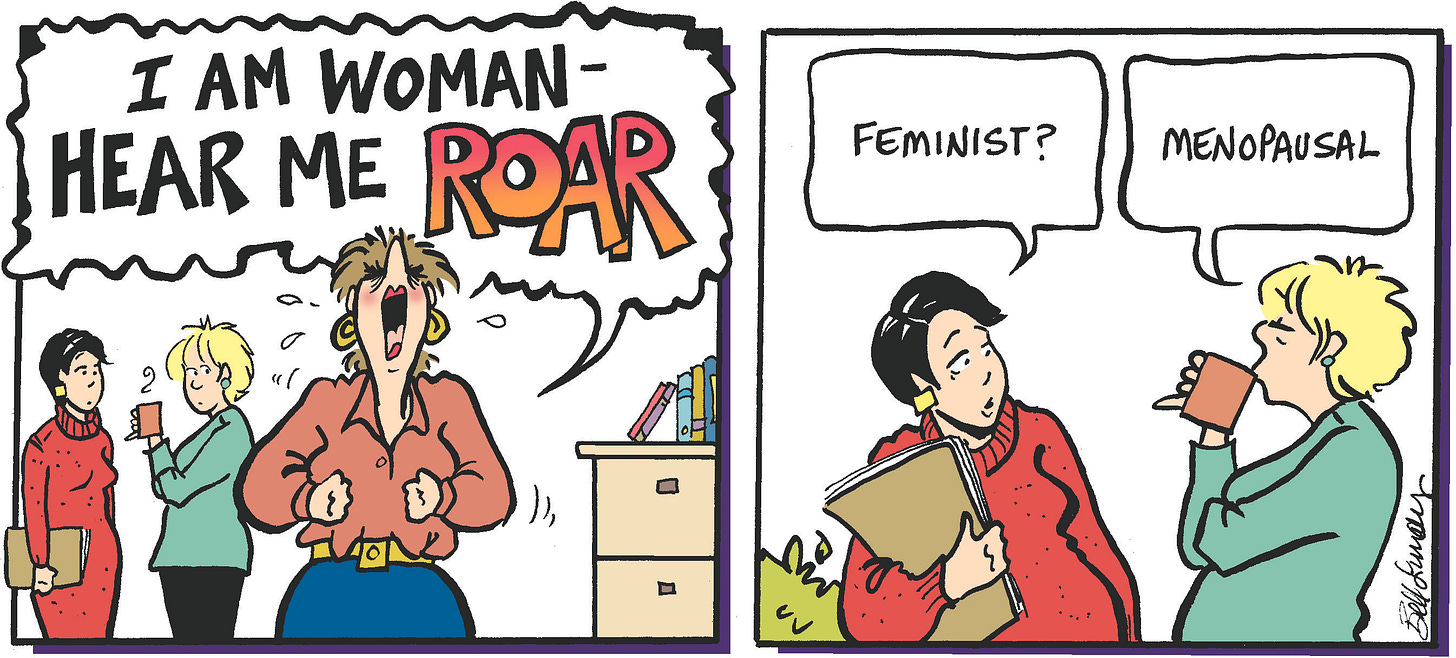
Love hearing about how cartoonists work out their gags!
I'm wondering if the writing process is different for one-off strips than, say, a week long story arc? I was chatting with Bill Holbrook earlier this month and we both agreed that one-offs are harder to write (especially Sunday strips). Not saying that story arcs are "easy", but one-offs do seem to require extra thought behind it.
This is a classic example of that Fred Astaire vibe: all the hard work and meticulous attention to detail to produce a final result that feels smooth and easy.